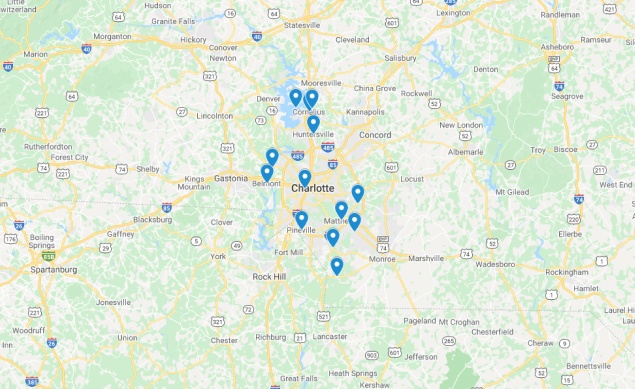Paraquat dichloride, known as Paraquat, is a chemical widely used as an herbicide in the United States. Since the decline in farmers’ use of Monsanto’s Roundup and other herbicides in recent years, Paraquat’s popularity has increased. This is especially true of soybean crops where the use of Paraquat increased four times in the last decade. However, recent lawsuits argue that Paraquat’s use is linked to Parkinson’s Disease.
The following gives a brief description of the current litigation related to this herbicide and a timeline of Paraquat’s association with Parkinson’s Disease.
The Litigation Scene To Date
Since 2017, individual plaintiffs have filed cases in state courts against the manufacturers of Paraquat.
In October 2017, plaintiffs in St. Clair County, Illinois filed a lawsuit seeking damages on behalf of Thomas and Diane Hoffman, Mary and Carroll Rowan, and eight other farmers and agricultural workers exposed to Paraquat who then developed Parkinson’s Disease. The original defendants in the case were Syngenta and Growmark. The case was later amended to include Chevron Chemical as a defendant. Thomas Hoffman is now deceased from his injuries.
Lawyers filed additional individual lawsuits in April 2019 in several counties in California. The state’s Judicial Counsel consolidated the California cases in Contra Costa County into California Judicial Counsel case number JCCP 5031. Plaintiffs filed these cases against Syngenta, Chevron USA, Inc., and other manufacturers. These distributors marketed, licensed and sold Paraquat in California and in other states since 1964. The JCCP 5031 cases allege the following causes of action:
- Strict product liability
- Negligence
- Public nuisance
- California Consumer Legal Remedies Act
- Breach of Implied Warranty of Merchantability
Personal injury lawyers continue to seek potential plaintiffs for lawsuits against the manufacturers and on behalf of farmers and agricultural workers injured by Paraquat.
Paraquat’s Historical Background in the U.S.
The history of Paraquat dates back 60 years. The herbicide was on the market for 26 years before it received a registration review.
1961: Manufacturers introduced Paraquat to the commercial market and it became a registered herbicide with the U.S. Environmental Protection Agency (EPA) in 1964.
1987: The EPA issued a Registration Standard for Paraquat. The EPA generally reviews whether a chemical meets the EPA statutory standards for registration every 15 years. The agency evaluates whether the product performs its intended use without unreasonable risks to humans or the environment.
1991: The EPA requested additional data on ecological effects, environmental fate and residue chemistry.
1997: By this time, seven products on the market contained Paraquat, and all of them were restricted use products. All Paraquat products today are restricted use only, which means only trained certified applicators may apply them.
The EPA announced that individuals who mix, load and apply the products are the most likely to face exposure to Paraquat during and after agricultural application.
2009: A study released in the American Journal of Epidemiology said that Paraquat exposure within 1,600 feet of a home increased the risk of Parkinson’s Disease by 75 percent.
2016: The EPA issued revised packaging instructions to eliminate the illegal transfer of the herbicide to beverage containers.
2019: In a draft human health risk assessment, the agency found that the “dietary exposure risk” of Paraquat is acceptable when used in accordance with directions. The EPA’s Proposed Interim Decision issued in 2019 was out for public comment until Dec. 22, 2020. The Proposed Interim Decision suggested mitigation measures to speak to the health risks for workers who apply Paraquat products.
In October 2019, the EPA reviewed more than 70 articles that researched health outcomes of Paraquat products, including Parkinson’s Disease, lung function, respiratory disease and cancer. The EPA found that there was insufficient evidence to link the use of Paraquat to these illnesses.
The Link Between Paraquat and Parkinson’s Disease
Parkinson’s Disease is a chronic, neurodegenerative disease that causes varying degrees of disability. The symptoms of Parkinson’s Disease are:
- Tremors in the arms and legs
- Bradykinesia (slow movement)
- Rigid muscles
- Loss of smiling, blinking and other autonomous movements
- Impaired balance and posture
- Slurred speech, hesitation, low volume
- Trouble writing
In 2011, the National Institutes of Health (NIH) released a study that reviewed the case histories of 80,000 farmers and agricultural laborers. The NIH study found that individuals who used Paraquat (and a similar chemical called rotenone) developed Parkinson’s Disease at a rate 2.5 times that of non-users. The study indicated that Paraquat damages cells by causing oxidative stress through intracellular molecules. Oxidative stress is an imbalance between free radicals and antioxidants.
This information in conjunction with DNA studies showing a correlation between Paraquat and human disease caused 32 countries to ban Paraquat. A few of those countries continue to produce Paraquat, but export almost all of it to the U.S. The U.S., on the other hand, chose to limit Paraquat application to certified applicators. The EPA continues to study the issue in its re-registration process for Paraquat.
Looking Ahead
Given its $10.58 billion in worldwide crop protection sales in 2019, Paraquat has the potential to affect the lives of tens of thousands of farmers. If the cases against Syngenta continue to grow in number, it is possible that such an increase may lead to the creation of multidistrict litigation (MDL). MDL cases invite the possibility of global settlements for plaintiffs.
To keep up with lawsuits like these, and the latest mass tort and class action news, subscribe to the Alert blog.
Also, get in touch with Alert today to learn more about the attorney answering service we can offer you.





